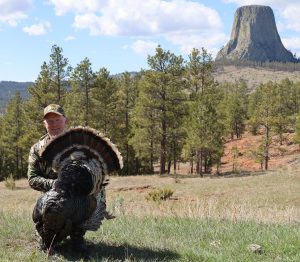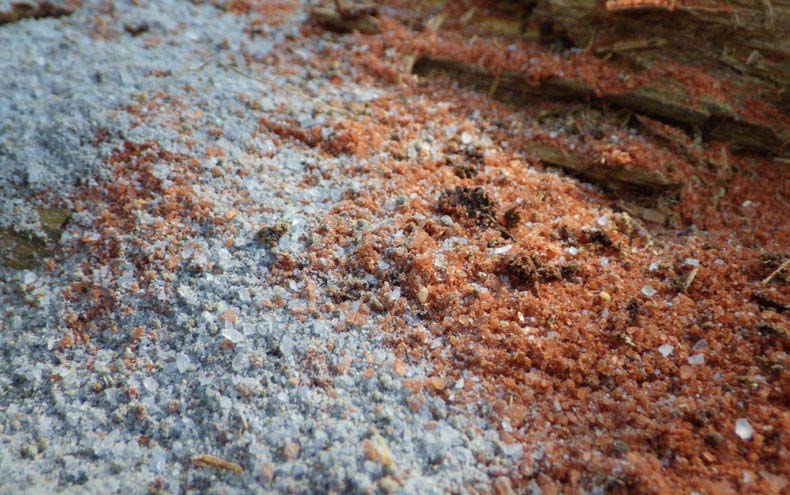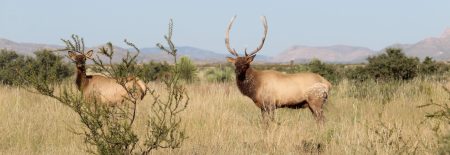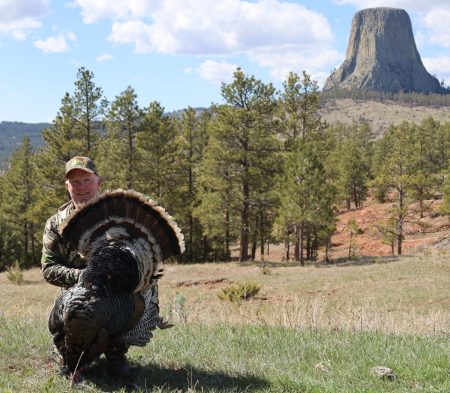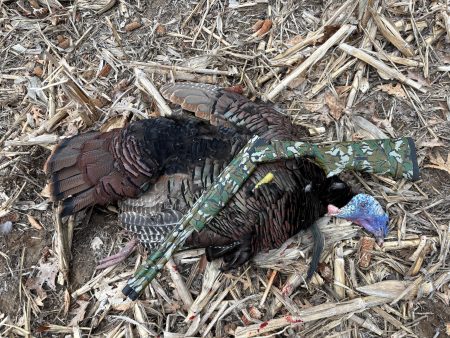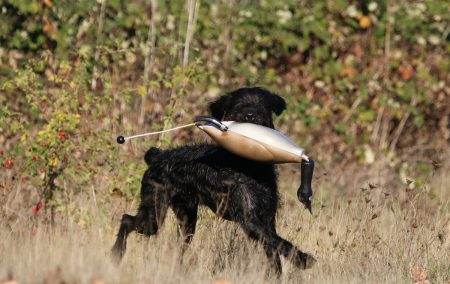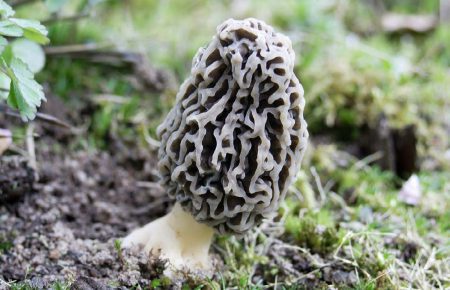A mineral lick is where animals in nutrient-poor ecosystems obtain essential minerals. Mineral licks often occur naturally, providing the sodium, calcium, iron, phosphorus and zinc required in the springtime for bone, antler and muscle growth (along with milk production) in deer, moose, elk and other wildlife.
Minerals benefit deer health and antler growth (we think): There is no verified research with free ranging whitetails that proves that supplemental minerals improve whitetail health or antler production. BUT – there is plenty of anecdotal evidence and theory that makes most biologists and experts believe that there is some positive effect on whitetails when minerals are provided. There certainly doesn’t seem to be a downside, so in most cases it’s recommended if you have the luxury and resources available to supply additional minerals.
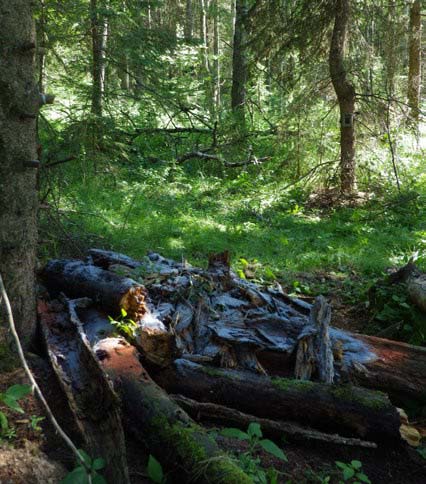
local game herds.
The ultimate goal of making a supplemental mineral lick is to increase antler size and improve overall health of local deer herds by providing salt and trace minerals that may be lacking in a given area. During the summer months, hunters can also set up a trail camera at mineral licks to monitor and study area population densities, buck to doe ratios and trophy quality. Putting out minerals for whitetails is a popular strategy used by hunters to either aid in herd health or attract deer to a particular location. But can minerals actually achieve these goals? The research isn’t always 100% clear. Here’s what we know, what we don’t and a few things to keep in mind this year if you plan to use minerals as a tool on your deer hunting property.
Calcium, phosphorus and sodium are key: Calcium and Phosphorus are the two most prevalent minerals in antlers, so it makes sense that these two minerals should be included in any supplement you provide. The main ingredient animal seek at mineral licks is sodium, which water plants are rich in. Normal plants are mainly rich in potassium, but a healthy balance of both is required. Some water plants have up to five hundred times more sodium than normal plants but water plants are mainly found during June/July. Animals will seek sodium (salt) from anywhere, especially during the winter months when it’s hard to find. When considering a supplement to use, these key minerals should be focused on but not only for ingredients but also ratio. The mix should contain as much of these minerals as possible while containing enough salt to encourage use by deer. In general, there should be at least 1.5–2.0 times as much calcium as phosphorus. This is the approximate ratio of these minerals in mature antlers.
That being said, trace minerals (all those other minerals in small amounts above) are important too – and in some cases could be the minerals that whitetails are lacking the most in their habitat. So be sure to find a supplement that contains these as well.
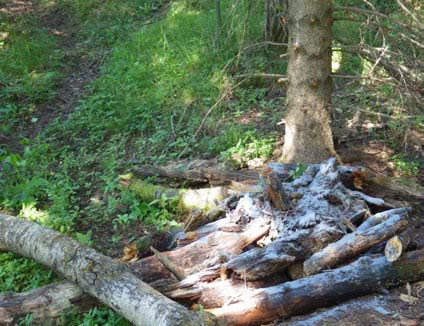
absorb the minerals.
This past spring, I’ve witnessed animals licking the salt off parked vehicles. In fact, one vehicle was so tasty, there was half a dozen big horn sheep underneath it and many tourists taking videos and pictures.
Bulls and bucks need additional salt to help with antler growth and mothers and their young also can use supplemental minerals to help with nourishment and development in addition to milk production which makes spring the ideal time for setting up or refreshing mineral licks. Frequently, animals find low lying areas of stagnant mineral rich water and feed heavily of aquatic plants, but they’ll also use a convenient mineral lick, so if you plan to create one find a place where many game trails intersect and it’s away from aquatic vegetation.
Once you’ve chose an area with lots of traffic, look for an old stump and clear away a few inches of the ground around the edges. If no stump is available (common problem) scrap the ground down a few inches to expose the soil and make a pile of wet rotting wood two or three feet in diameter.
You can also just buy a large salt lick block from a farm ranch supply store and place it on the barren soil or stuff it into your wet wood pile, but be aware that it takes time to dissolve a mineral salt lick block and some deer will not start using the lick until it dissolves into the soil or wood.
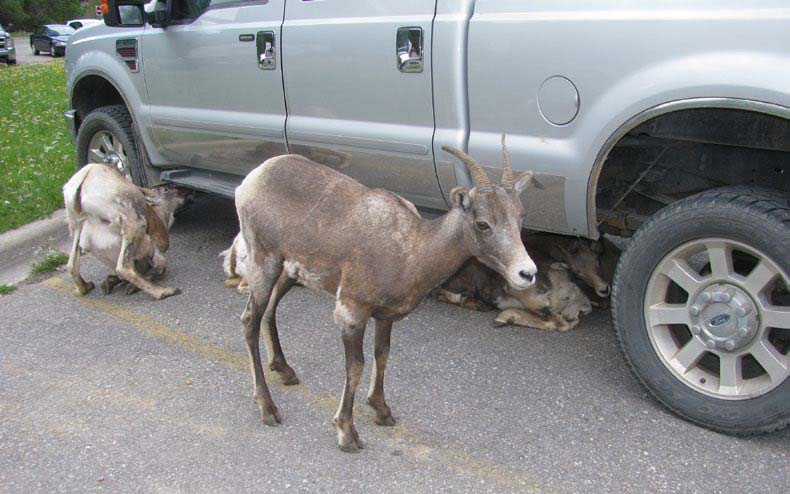
For this reason, I prefer to use quicker method to get mineral licks started. Commercially bagged preparations contain essential minerals to assist keeping herds healthy and producing optimum antlers. I simply pour the minerals over the wood pile. Some minerals will sprinkle on the ground, but the wet wood absorbs most of the product and it helps the animals digest it better. I can come back to half the wood pile I set up because the animals have chewed it right up.
Specifically, Rack Staker products have a proprietary formula high in vitamins but also contains manganese, iodine, copper, sulfur and other trace minerals to help grow young fawns and encourage large antler growth. The two mineral lick products are Glory and Blaze designed specifically for deer. They also sell a heavy weight product for larger ungulates like moose and elk. All mineral mixtures are simply emptied at your chosen site location and refreshed as required, depending on the popularity and water table levels. Glory contains higher levels of phosphorous and calcium to help bucks grow larger antlers, while Blaze is a high in vitamin/mineral content formula to attract and hold deer of all sex and sizes in the area – helping the overall herd.
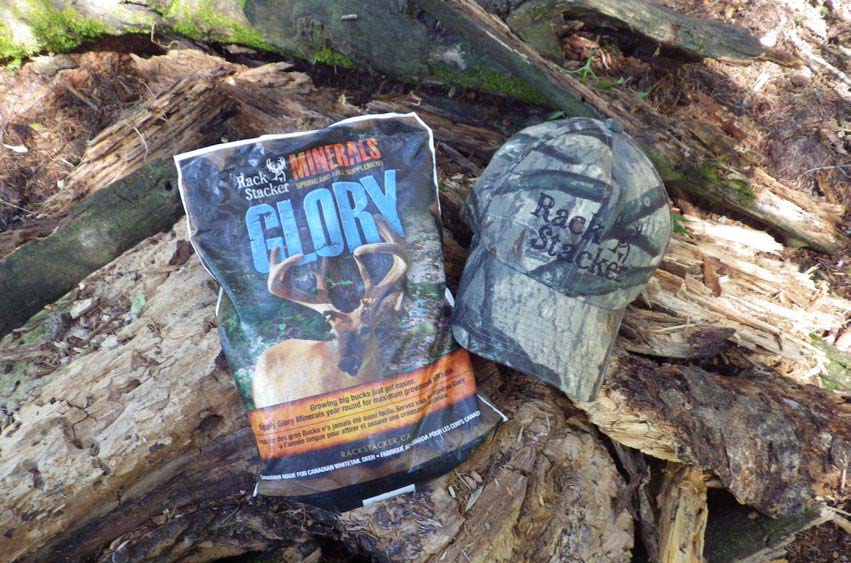
I’ve setup licks over the past few seasons in order to take pictures of the deer and moose in the area. Below are a few helpful tips and warnings to make your lick site better:
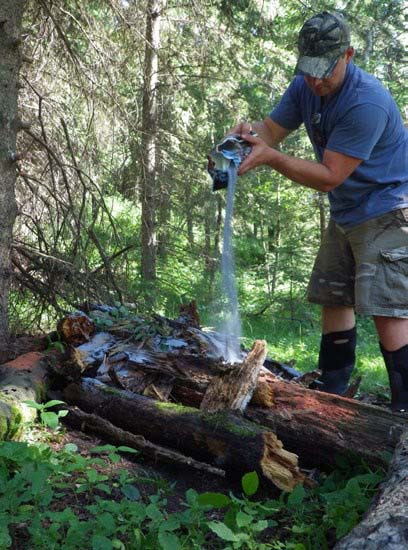
Do Not
- Do not place the lick so near water that the ground water table reaches the lick and leaches it away.
- Don’t move the mineral lick if your camera only shows does and fawns – it’ll hold the bucks in the area.
Do
- Setup under an evergreen tree – it helps protect the mineral mix from dissolving with wet weather.
- Keep the mineral lick attractive by refreshing every six months.
- Keep human contaminants to a minimum when setting up the lick by wearing rubber boots.
- Resist the urge to frequent the area for the purpose of checking the trail camera.
Setting up the mineral lick is considered baiting in most jurisdictions, so make sure you check and understand the regulations in your area about hunting the same area where you’ve created a mineral lick. Most sites I choose are summer and spring feeding grounds which usually aren’t the same exact locations animals rut when hunting season starts.
Per our affiliate disclosure, we may earn revenue from the products available on this page.



